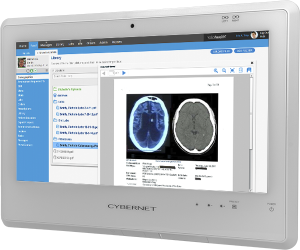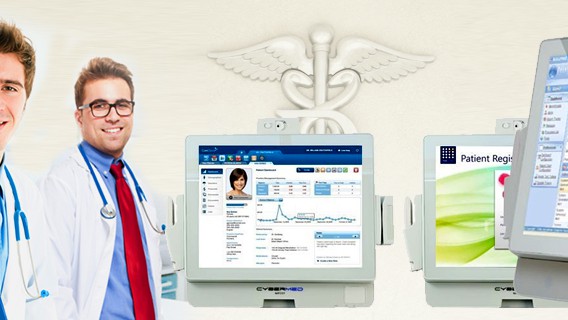In the past we discussed the uses for computers in a medical healthcare facility or hospital. While we provided some solid guidelines, we didn’t address the various departments, their specialties, and unique requirements.
Here we’ll be covering one of them ﹘ the neonatal intensive care unit ﹘ from its function in patient treatment to the “why’s” a medical computer is best for this important department.
What Is It? Neonatology or Care of Sick Newborns
Article Guide
“There’s something wrong with your baby.”
It’s one of a parent’s worst nightmares. Especially if it’s their first child. Fortunately, the modern healthcare system is ready to handle such situations and bring hope.
Neonatology is medical care of newborn infants. These are children under 28 days of age. They are also called neonates. A subspecialty of pediatrics, neonatology focuses on those who are ill or premature. Because of this, neonatology is a hospital-based specialty and is usually practiced in the neonatal intensive care unit (NICU).
Staffing the NICU
Taking care of these newborns is the neonatologist. This provider receives training first as a pediatrician, then completes additional three years of education in neonatology.
Working with the neonatologist are other providers like pediatricians and neonatal fellows. They are supported by numerous medical staff.
The neonatal nurse will be the person most often encountered by parents, family, and visitors. Much of the day-to-day care is handled by them. They monitor the newborns from minute to minute, give their medications, and do everything to make sure they’re safe and comfortable. Neonatal nurses report updates or any changes in newborns to the neonatologist, and carry out their orders.
Because they spend so much time with the newborns, neonatal nurses are also called “bedside nurses.”
Neonatal nurses provide a lot of aid to the newborn’s parents, who are strongly encouraged to be active in the daily care of their baby. They answer questions, provide assistance to the care of newborns, and educate the parents to adjust to a life of parenting in the NICU.
One of these educational opportunities may involve breastfeeding. If so, a lactation consultant may become involved. They are trained professionals who help new parents and their babies overcome breastfeeding challenges. These include finding a comfortable position to feed their child to issues with weight gain.
Other healthcare members found in the NICU include neonatal physician assistants and nurse practitioners, respiratory therapists, social workers, and nursing assistants.
Newborns In NICU
Newborns present a unique set of health challenges in general. A lot of these revolve around the fact that much of their body’s systems like immunity are underdeveloped.
Common issues that send newborns to the NICU include:
- Prematurity or being born before 37 weeks of age. These newborns are often called preemies.
- Low birth weight, which is defined as weighing 5 lbs., 8 oz. or less.
- Intrauterine growth restriction or poor growth of the fetus in the womb.
- Congenital malformations or birth defects ranging from a cleft palate to omphalocele, where normal internal organs are pushed outside the body
- Sepsis or blood poisoning, where the body’s own immune system overreacts to infection.
- Pulmonary hypoplasia or birth asphyxia, which are breathing issues whose causes range from underdeveloped lungs to oxygen deprivation.
In the US, between 10 to 15 percent of neonates wind up in the NICU.
Prematurity and low body weight are the most common reasons why newborns go to the NICU. Below are some of the most extreme cases around the world.
- Kwek Yu Xuan (born at 24 weeks; 7.5 ounces at birth, or barely more than a softball at 7.0 ounces)
- Baby Saybie (born at 23 weeks, 3 days; 8.6 ounces)
- Rumaisa Rahman (born at 25 weeks, 6 day; 8.6 ounces)
- Melinda Star Guido (born at 24 week; 9.5 ounces)
- Kenna Moore (born at 24 weeks; 9.6 ounces)
- “Tom Thumb” (born at 24 weeks; 9.7 ounces)
All survived to go home. “Tom,” as a male, is especially noteworthy since most extreme case preemies who survive are female.
Inside the NICU
The neonatal intensive care units found in the US are divided into four levels. Each one represents the amount of care available for a newborn with higher numbers indicating more acute (immediate) care.
- Level I: These are either for healthy, full-term babies or those still sick but stable enough for transport to a higher level NICU.
- Level II: These are for newborns recovering from higher levels.
- Level III: Preemies and those suffering critical illnesses are treated at this tier.
- Level IV: As Level III but for even more extreme cases. Many of these NICUs are located in hospitals with surgical expertise in treating complex newborn issues.
Babies at all levels get 24-hour care. They are usually in an incubator, an enclosed bed that keeps them warm. Those needing assistance to breathe will be hooked up to a ventilator. Many will have an intravenous line (a needle in a vein) to give them fluids and medicine. And for those who can’t eat on their own, they’ll have a feeding tube running into their mouth or nose and down their throat to their stomach.
Other medical devices and machines of note found in the NICU include:
- apnea monitor: detects when the newborn stops breathing for a few seconds. An alarm immediately goes off when this happens.
- bili lights: these bright lights are located over a newborn’s incubator. They are used to treat jaundice, which occurs when their liver isn’t fully developed or isn’t working. Treatment can last between 3 to 7 days.
- cooling blanket or cap: this is used to lower the newborn’s body temperature to help reduce or prevent problems if their brain doesn’t get enough oxygen. First it cools their brain and body to about 92 F. After around 3 days, they’re slowly warmed to a normal body temperature of 98.6 F via the incubator.
- high-frequency ventilator: newborns take 30 – 60 breaths a minute vs an adult’s 12 – 20 breaths. This special ventilator is used to breathe for them at this faster rate.
- umbilical catheter: this thin tube goes into the arteries of the baby’s umbilical cord after it’s cut after birth. Through it, providers and medical staff can give fluids, blood, medicine, and nutrients like vitamins and minerals. They also use the tube to take blood samples and even check blood pressure.
A newborn’s stay in the NICU, on average, is 13.2 days. This can climb up to 46.2 depending on their complications. Recently, a little boy by the name of Crosby Gebura was finally released from the Cleveland Clinic Children’s NICU after more than 18 months (September 2016 – May 2017), one of the longest in the hospital’s history.
Medical Computers in NICU

Much like in the intensive care unit for adult patients, medical computers and medical tablets found in the NICU are used for electronic medical records and patient monitoring. They should have the following, similar features:
- Antimicrobial* technology – protects the computer casing from deterioration and degradation.
- IP65 rated – the medical computer is sealed and waterproof so hospital cleaning agents won’t damage interior components.
- Medical Grade – the medical computer is 60601-1 certified so any electromagnetic and radiation emissions from it are safe near patients and, more importantly, the medical devices critical to their survival.
- Fanless design – keeps the medical computer cool without the whir of fans, letting newborns get much needed sleep. Won’t spread pathogens like fanned computers, either.
Closing Comments
The neonatal intensive care unit is used for ill or premature newborns who need round-the-clock monitoring and care. Medical devices and equipment need to function properly in this environment where even a brief failure can be a life-or death matter. Medical grade and fanless design are just a couple of features that should be on healthcare IT’s checklist for medical computers in the NICU.
If your medical group or hospital wants help with such vital equipment, contact a representative from Cybernet. As a true device manufacturer, Cybernet can customize products to meet your specific needs in a timely and cost-effective manner.
Also follow Cybernet on Facebook, Twitter, and Linkedin to stay up to date on this and other relevant topics.
How Medical Grade Computers Improve the Standard of Care in the Medical Profession
August 3, 2015
The face of the healthcare industry has changed drastically in the past decade. Now, the use of devices like medical grade computers in patient rooms, emergency rooms, and operating rooms have allowed healthcare service…
0 Comments6 Minutes
3 Unique Point of Care Uses for Medical Computers
December 1, 2017
The term "point of care" may be a little bit unclear, so let's start off with defining what that means. Point of care testing suggests any medical treatment that can be done specifically where the patient is located.…
0 Comments6 Minutes
You Can't
Learn from a Pop-up
But we can deliver knowledge to your inbox!
We dive deep in the industry looking for new trends, technology, news, and updates. We're happy to share them with you.
Knowledge, News, and Industry Updates Right in Your Inbox




